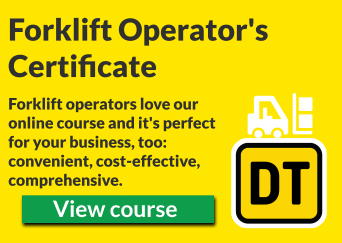Forklift operators spend most of their time sitting down and twisting behind them. This creates muscle tension, particularly in the lower back and shoulders, and the risk of physical strains. Despite how it looks, an eight-hour shift sitting down can cause a lot of discomfort due to lack of full range movement in the joints and the nature of forklift suspension (i.e. it’s virtually non-existent). Even if an operator has to do manual handling occasionally, the long periods of sitting cause the body to stiffen up and the muscles will not be ready for heavy lifting.
To maintain productivity an operator needs to feel as fresh at the end of their shift as they do at the start. Forklift ergonomics have improved over the years but a forklift operator is still essentially at the mercy of the bumpiness of the ground and the quality of the seat. There are ways in which an operator can increase their strength and flexibility to be able to cope with these demands, as well as some things that managers can do to make it easier on operators.
Why do forklift drivers get pains and aches?
The body is not designed to be sitting down all day. Add into the mix a machine that vibrates and jolts the driver, plus the repetitive nature of the task, and the body’s resilience wears down quickly. Forklift drivers will first start to feel pains in their lower back, neck and shoulders, then in their upper back and forearms. Pain is sometimes said to be ‘weakness leaving your body’ but in the case of this pain, it’s a warning that the body’s muscle tone and strength are not enough to cope with the demands placed on it.
What happens if a forklift operator ignores aches and pains?
Untreated aches and pains can progress to chronic pain, restricted movement and loss of function. This can affect a person’s ability to do their work. They may not be able to control the forklift properly, meaning they are at more risk of having an accident.
Dangers from falling goods
Forklift operators can be hit by falling goods which is why it’s important that they ensure the loads are securely on the forks or attachment, balanced and within the capacity of the fork hoist; the forklift’s cage should be undamaged. Operators should never walk underneath forks that have loads on them. You can learn more about these types of safety strategies in our forklift certificate course.
How do you reduce driver discomfort?
Maintain the floor
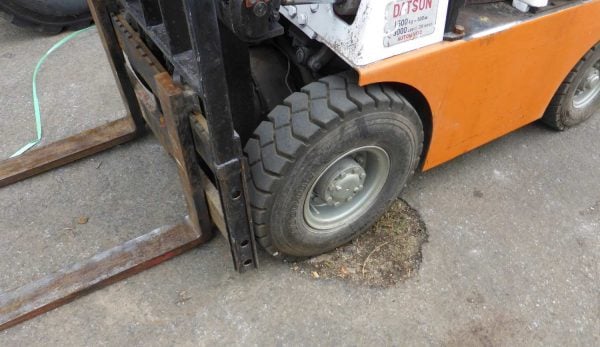
Forklifts have virtually no suspension if they have solid tyres, which most do. Pneumatic tyres provide some cushioning, but not much. A small pothole like the one shown above will be uncomfortable for a driver to drive over. These should be filled. Similarly, long cracks and abrupt changes in paving height should be fixed. Severe changes in height cause the driver to have to accelerate to mount them, then immediately brake.
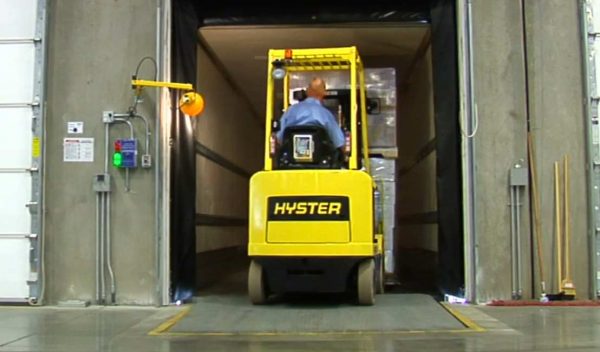
Ramps between loading docks and trailers should fit fairly flush and not be unduly steep.
Repeatedly driving over kerbs and weather strips is tiring for an operator. Fit ramps to reduce the jolting.
Your forklift operators should be able to point out areas of the warehouse floor or yard surface which need attending to.
Use a good seat
The quality of the seat is usually reflected in the overall price of a forklift: cheap forklifts have cheap seats with poor padding and ergonomics. A cheap seat provides very little support or cushioning whereas a good seat will absorb much of the vibration and jolting.
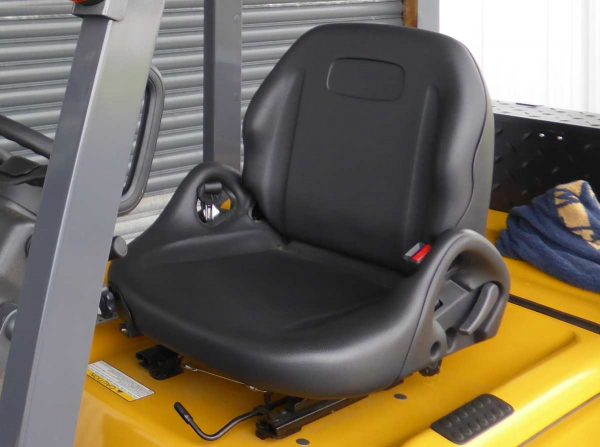
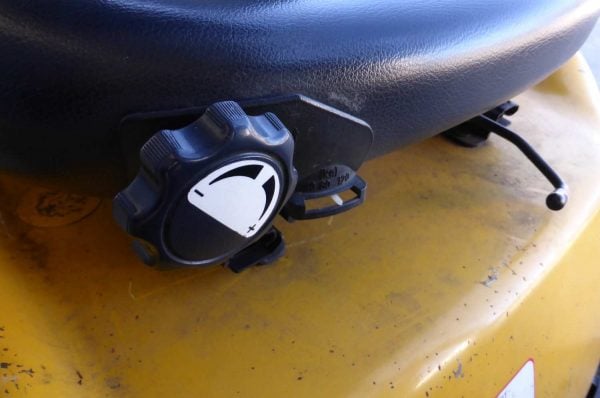
A high-end seat will have suspension, lumbar support, lateral support, horizontal seat adjustment, swivel feature to minimise the amount of turning an operator has to do, armrests to prevent fatigue and built-in features to protect the operator if the forklift tips.
Reduce speed
The faster the operator drives, the bigger the jolt to their body and this will cause physical fatigue much more rapidly which leads to bad posture and, ultimately, injury. This stress is also felt by the forklift which will suffer wear and tear more quickly.
Looking after your body
Every shift should start with a brief warm-up to loosen up muscles and joints. Operators should take frequent short breaks and stretch. It’s important operators do exercise as a strong body is more resilient to fatigue. Note that while over-exercise causes inflammation in joints, so does lack of activity – sitting doing nothing actually causes inflammation.
Operators should not have anything in their back pockets – a wallet or phone in one back pocket causes an imbalance in the hips. Operators should also tie long hair back and not wear hanging jewellery – avoid anything that could get caught in machinery.
Before the shift, operators should do some basic stretching and muscle warmups – squats, lunges, shoulder stretches and gently back stretches. Rotate the wrists, gently turn the torso from side-t0-side and circle arms to loosen shoulders.
When sitting in the site, the hips should be against the back of the seat anda the feet should be resting comfortably on the pedals. Operators should not have to lean forwards to operate the steering wheel or mast controls. The seatbelt should always be worn.
Use newer technology to reduce strains
Mirrors should be set so that the driver has good visibility. While they must always look over their shoulders before reversing, mirrors that cover all the blind spots will mean less turning has to be done once the initial check has been made. Some machinery has cameras to help, too.
Sensors that detect the correct height to lift the forks helps prevent neck craning which can cause neck and shoulder pain.
Train operators in manual handling
Some operators sit in their seat almost the whole shift while others will be on and off the forklift moving boxes and other goods manually. All operators should be trained in how to safely lift items without hurting themselves.

